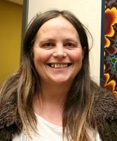Senior Software Developer in Medical Imaging
Interests: Fractal Cosmology, Computes, Fractals, Chaos Theory, Physics, Astronomy, Black Holes, Event Horizons, Singularities, Quantum Mechanics, Robotics, Medical Physics, D Ultraound, Robarts Research Instit Age: 58
After receiving my bachelor's degree in computer science from the University of Western Ontario (now called Western) in 1985, I began working full time in the Astronomy Department at Western to continue work on a project I had started as a summer student. While there, I designed and built a device called a polarimeter controller which was used to investigate the magnetic fields of stars. I designed the circuit and hand wire wrapped it myself, developed all the control software using assembler language (I managed to fit all the code into 2K of EEPROM memory) on a Motorola HC11 single chip microprocessor (the HC811E2FN to be specific) . I consider my time in Astronomy as my apprenticeship since they taught me everything I know about how computers really work. My interest in Astronomy was a deciding factor in my decision to work for that department. When it became clear that this department was going to be downsizing and merging with Physics, I decided to change careers and switch to the field of medical imaging.
In 1993 I joined the team at Robarts Research Institute which was one of the first groups to develop 3D ultrasound technologies and their applications. Since my main area of expertise was control software, I was put into the position of developing acquisition and calibration systems for 3D ultrasound guided biopsy and surgical procedures. Some inventions came out of this technological development and I am personally named on many of the patents. I am also co-author of 34+ papers in this field. I continue to work on these applications at Robarts Research Institute and Western to this day.
My independent research into fractal cosmology began back in the mid 1980's when the Mandelbrot Set algorithm was made popular by an article in Scientific American's computer recreations section (by A. K. Dewdney). Back then all I had was a Commodore-64 but I was able to implement his algorithm in Basic and was able to explore it in great detail (and never looked back). As computers became more powerful, so did my ability to render this mathematical monster with greater speed and in greater detail. These days I am able to zoom to the Mandelbrot Set in near real time and have developed many applications around this most famous fractal pattern generator. This is how I came to realize that the Mandelbrot Set (M-Set) is more than just a pretty picture. My understanding of fractal cosmology comes directly from studying the underlying dynamics associated with the Mandelbrot set (M-Set). In other words, everything I know about fractal cosmology, I learned from M-Set. This revelation inspired me to do independent research into cosmology including and especially relativity and quantum mechanics in hopes that a grand theory could be discovered using this line of thinking. It is my belief that the study of fractals and fractal cosmology will (at the very least) lead to a better understanding of the inner and outer workings of the Universe at all scales.


